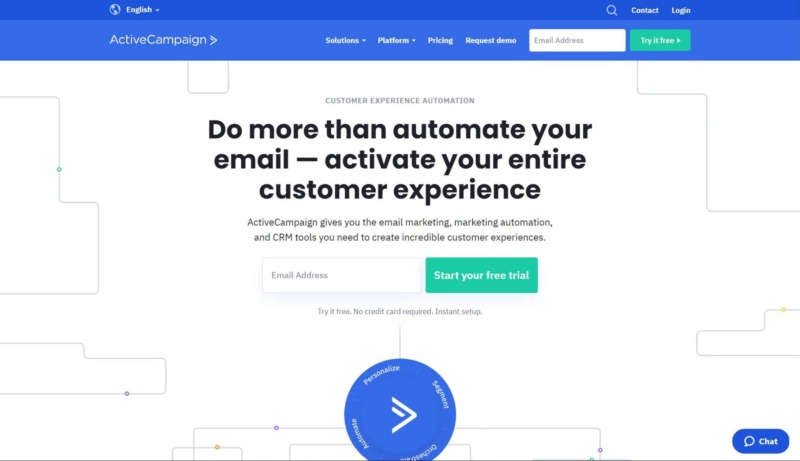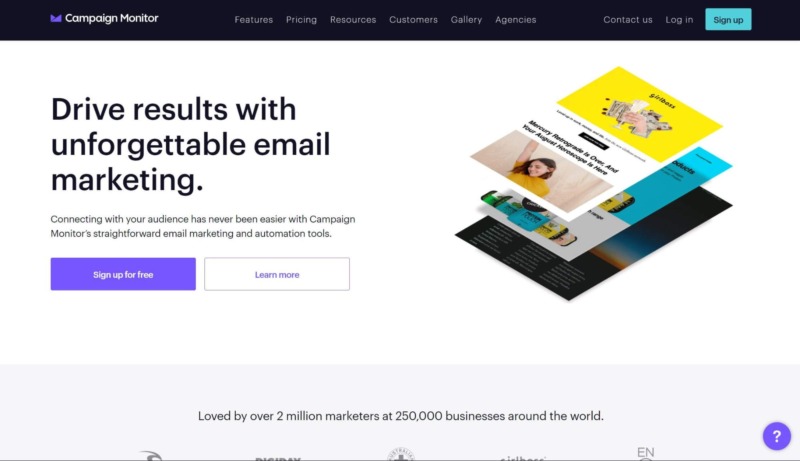- Oct 15, 2020
 0
0- by A2 Marketing Team
It’s no secret that the COVID-19 pandemic has had an enormous impact on consumer behavior, with many shoppers moving to e-commerce (and many more opting to save their money). These changing behaviors, coupled with the stress of quarantine and fear of the future, mean that it is far from business as usual, particularly when it comes to email marketing.
However, these challenging times also represent a major opportunity for brands to build relationships with their current and potential customers. By adapting your email marketing strategy to maximize engagement and deliver value to subscribers, you can build trust and turn uncertain shoppers into loyal, lifelong fans of your brand.
In this article, we’ll consider some of the challenges email marketers are facing. We’ll then offer tips to overcome those challenges and look at some email marketing tools that can help you do just that. Let’s dig in!
How the Business Landscape Has Changed Due to COVID-19
You’d be hard pressed to find an aspect of life that hasn’t been affected by the pandemic. However, one of the largest shifts has been in retail and consumer shopping habits.
To start, people are just spending less. Some reports earlier in the crisis indicated a drop of as much as 7.5% in personal spending in the US, the largest such drop on record. People are hesitant to spend on non-essentials when there’s so much uncertainty about the future.
Additionally, when people do make purchases, they are increasingly doing so online. Part of this is simply the fact that many shops were closed for several months, but many people are continuing to buy online even after brick-and-mortar stores reopen. Habits are changing, and some experts expect a 160% increase in e-commerce purchases by new or low-frequency consumers.
Combine these changing habits with the increasing amount of time being spent online due to quarantine, and email has become a more powerful vector than ever for reaching customers.
Email isn’t just about letting people know what’s on sale (though that’s important, too). Used properly, it provides a way to build relationships with current and potential customers, so that when they do return to spending, they spend with you.
How to Maximize the Impact of Your Email Marketing
With so many emails being sent out during this time, it’s important to keep a couple points in mind. First, brand image is more important than ever. People want to know the brands they support are responsible and trustworthy.
Second, consumers are tired of the constant influx of COVID-related emails. As Marketo pointed out, folks are also all too happy to hop on social media and call it out.
With that said, here are some tips for making the most of your emails:
- Use authentic messaging. Your audience will know if you’re being genuine or just trying to take advantage of the situation.
- Provide real value to your audience. Don’t just focus on selling. Instead, provide compelling content and useful advice related to your product or service.
- Consider your demographic carefully and be sensitive to their needs. Stress and concern about the future are high right now, so keep that in mind.
- More frequent campaigns appear to be doing better, though this depends a lot on your audience. Since many people are still stuck at home, they’re hungry for content. Give it to them!
- Be personal. Customize your email templates to include little touches like names. It goes a long way.
Finally, consider the tools you’re using for email marketing. The right platform can make it much easier to create memorable, personal emails that speak to your audience. Don’t forget the importance of a reliable email host, either. A robust hosting platform is vital to ensure your messages make it to customers.
4 Email Marketing Tools That Can Help You Stand Out
There are a lot of email marketing platforms on the market. Choosing the right one can make or break your campaign. We’ve narrowed the field down to four of the most powerful and popular options. Let’s start with arguably the most popular.
1. MailChimp

MailChimp is one of the biggest names in email, and for many it’s the first one that springs to mind. It certainly earns that reputation, too, with powerful features like the clean template editor and incredibly thorough reporting and analytics.
MailChimp is ideal for very small businesses that don’t need to send a lot of emails (thanks to the free plan), as well as users that value strong reporting, useful integrations, and a simple interface.
As mentioned, there’s a free plan that’s good for up to 2,000 subscribers. After that, prices start at $29.99 per month.
2. ConvertKit

If you’re looking for a MailChimp alternative, ConvertKit is an excellent option. This tool has been gaining popularity in recent years, and much of that has to do with its fantastic targeting features.
ConvertKit allows you to get really granular with user segmentation, so you can easily send the right emails to the right people. The other major advantage of ConvertKit is its built-in landing page editor, which lets you manage your entire funnel from a single platform.
ConvertKit is ideal for any business that needs to send a lot of highly-targeted emails. Prices start at $29.99 per month. There’s also a limited free plan available.
3. ActiveCampaign

ActiveCampaign is the tool of choice for businesses that need a more powerful email marketing platform. It’s packed with features, but the standouts are definitely the robust automation and easy-to-use editor.
ActiveCampaign also includes a built-in CRM tool to easily manage contacts and customer relationships, and the customer support is hard to beat. Overall, it’s a fantastic all-in-one tool for email management.
Prices for ActiveCampaign start at $9 per month, but vary highly depending on how many contacts you have. Unfortunately, there is no free plan, but the company does offer a limited free trial.
4. Campaign Monitor

Campaign Monitor is an excellent all-around email solution for small to midsize businesses. Standout features include versatile templates, an easy-to-use drag-and-drop editor, and a useful autoresponder tool.
True to its name, Campaign Monitor also provides highly granular analytics that let you get a clear view of your campaign’s performance. It also features automation and segmentation tools to help target your emails and tailor them to your audience.
Campaign Monitor starts at $9 per month. Although there is technically a free trial, it’s limited to just five subscribers.
Conclusion
Whether your business is pivoting to meet the changing needs of consumers, or you’re looking to maximize impact with existing customers, email marketing can play an important role in the process.
The keys to email marketing, particularly in this climate, are authenticity, personalization, being sensitive to the emotional needs of your audience, and providing genuine value. Combine these pillars with a solid email marketing tool and reliable hosting, and you’ve got a recipe for success.
Image credit: Pixabay.












